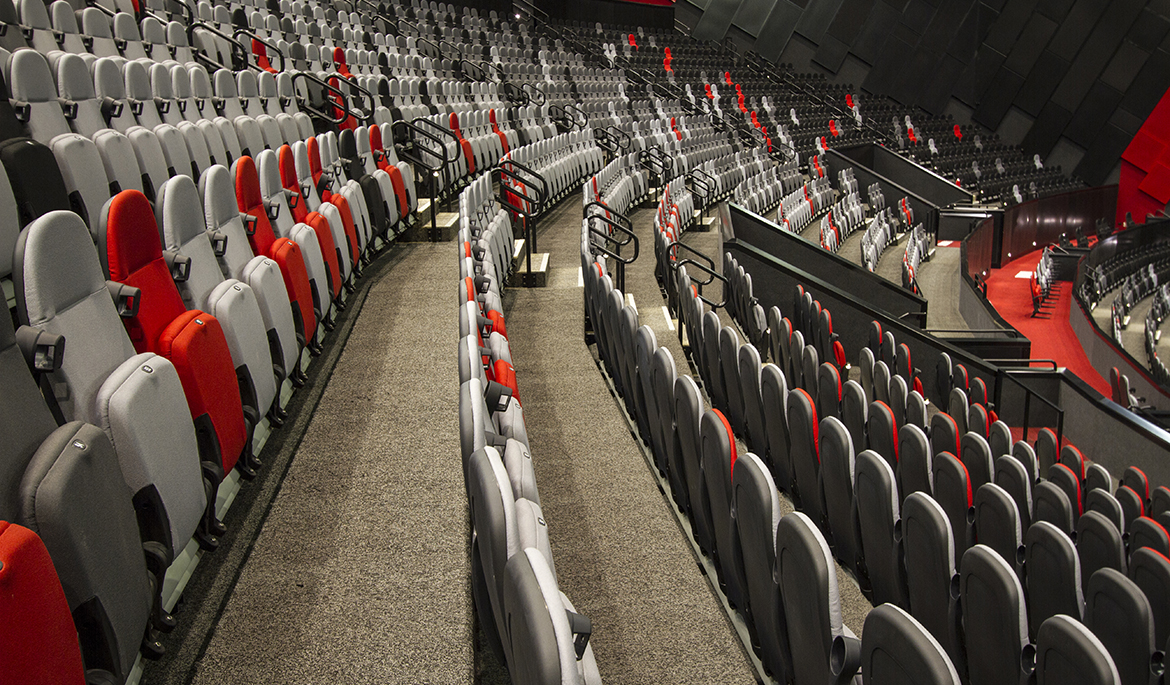Advancements in the design and production of venue seating have made flexible working options viable for a far more extensive range of settings. Meanwhile, large stadiums, sports arenas, and music venues frequently use retractable seating systems. And the most popular type of telescopic seating in use is horizontally retractable; that is what is focused on in this article. However, some incredible technological advancements have enabled lateral retraction and others that will allow the versatility of both lateral and vertical mobility in a seating system.
This type of seating has the potential to completely change how event rooms are used because of its adjustable heights, revolutionary folding mechanics, and chair designs. A venue can leverage space and revenue by having the flexibility to switch between the grandstand and tiered seating, increase the number of seats as needed, or add ‘bolt-on’ movable telescopic seating.
Why Is The Venue Seating Choice So Important?
Seating is required at venues all over the world. Users are naturally happy with better seats, and happier users are more likely to return, which helps the venue succeed. As such, a business can be transformed by high-quality seating, but it can also be constrained, particularly when fixed seating restricts the events that can be held. So, to endure and thrive, venues must be adaptable. This is where seating arrangements with transportable, modular, or retractable elements excel.
Which Kind of Locations Could Advantage From This Seating?
Retractable seating can be helpful no matter your venue’s size, shape, or objective. Telescopic seating solutions enable you to set up large-scale seating quickly and with much less effort than legions of staff trying to set up seating chair by chair. As such, a school gym hall can be converted into a lecture hall, and a local community centre can be turned into a sporting arena because of improvements in telescopic seating construction and layout.
Contracting
Retractable seats may be quite adaptable when you deal with the appropriate company. Manufacturers can work beyond challenging or constrained environments, such as those with restricted access, by manufacturing seating solutions on-site. For instance, most neighbourhood community halls are used for various events and would benefit from adaptable telescopic seating. Still, they would be discouraged by the venue’s constrained area and access.
Venues can avoid these problems by using modular designs, which enable the seats to be delivered in sections and erected on location. Modular seating can also be mobile, fixed, or a combination. Fixed modular designs enable you to optimise your floor space by just incorporating the number of seats you often need. Alternatively, to accommodate a larger audience, bolt-on mobile retractable seats can be installed.
Completely From Scratch
For optimal flexibility and profitability, a venue would prefer to be able to plan its space around its seating arrangements, but this is typically not possible. When constructing auditorium seating, the list of rules and limitations might be intimidating, especially if you’re an architect or venue operator. The possibility of designing a unique telescopic seating system for their area is a dream for many architects, but it often seems impossible to make this goal a reality.
Learn about iboma
The sheer number of choices is often daunting when looking at stadium seating options in animixplay. There are numerous things to think about, from choosing the arrangement and placement of your seating to the aesthetics of the seat itself. And contrary to popular belief, retractable seating is available in curved (perfect for theatre) and conventional straight-angled forms. To build grandstand sections, you can design seating systems that include a single or dual row of seats in each tier, removable chairs, and retractable boarding. Meanwhile, it is crucial to consider what the area will be used for initially.

